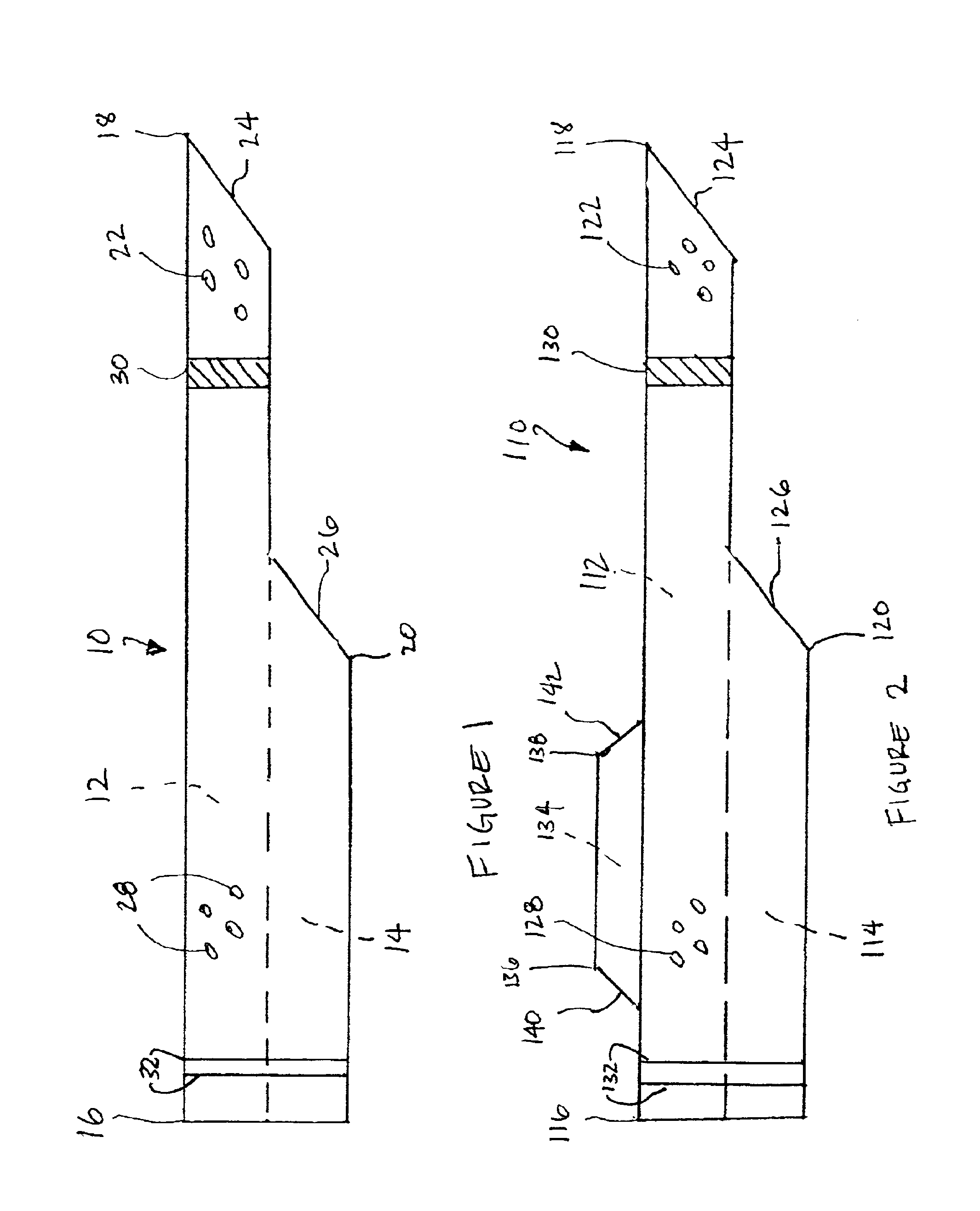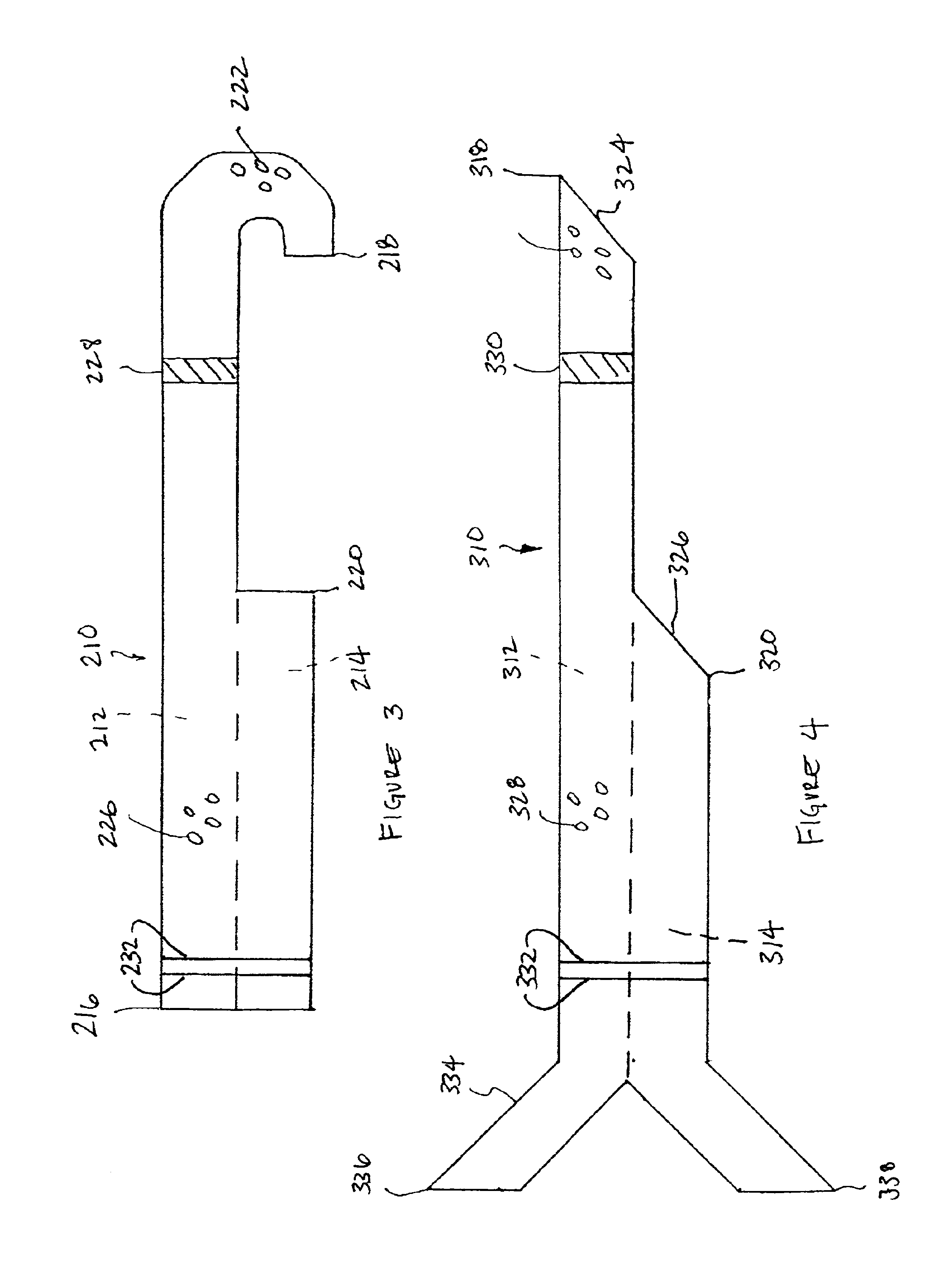Multilumen catheter for minimizing limb ischemia
a multi-lumen catheter and limb technology, applied in the field of multi-lumen catheters, can solve the problems of increasing the potential for infection and other complications, complex reactions within the body, and affecting the performance of the catheter, so as to improve the perfusion rate, maintain or enhance the effect of perfusion, and active maintenan
- Summary
- Abstract
- Description
- Claims
- Application Information
AI Technical Summary
Benefits of technology
Problems solved by technology
Method used
Image
Examples
Embodiment Construction
[0021]Turning now to the drawings provided herein, a more detailed description of the embodiments of the present invention is provided below.
[0022]With reference to FIG. 1, one embodiment of the present invention comprises a multilumen catheter 10 designed to lessen ischemia that can occur when a large diameter catheter is inserted into a patient's blood vessel. The multilumen catheter preferably is of unitary construction and requires only one entry point into the patient's body. The multilumen catheter 10 comprises at least two lumens: a first lumen 12 and a second lumen 14. The first lumen 12 extends from a proximal end 16 of the multilumen catheter 10 to a first distal end 18. The second lumen 14 extends from the proximal end 16 of the multilumen catheter 10 to a second distal end 20. The lumens 12, 14 of the multilumen catheter 10 may be arranged one of many different ways. For example, the two lumens may be joined in a side-by-side manner, forming a “figure-8” when viewed from...
PUM
 Login to View More
Login to View More Abstract
Description
Claims
Application Information
 Login to View More
Login to View More - R&D
- Intellectual Property
- Life Sciences
- Materials
- Tech Scout
- Unparalleled Data Quality
- Higher Quality Content
- 60% Fewer Hallucinations
Browse by: Latest US Patents, China's latest patents, Technical Efficacy Thesaurus, Application Domain, Technology Topic, Popular Technical Reports.
© 2025 PatSnap. All rights reserved.Legal|Privacy policy|Modern Slavery Act Transparency Statement|Sitemap|About US| Contact US: help@patsnap.com



